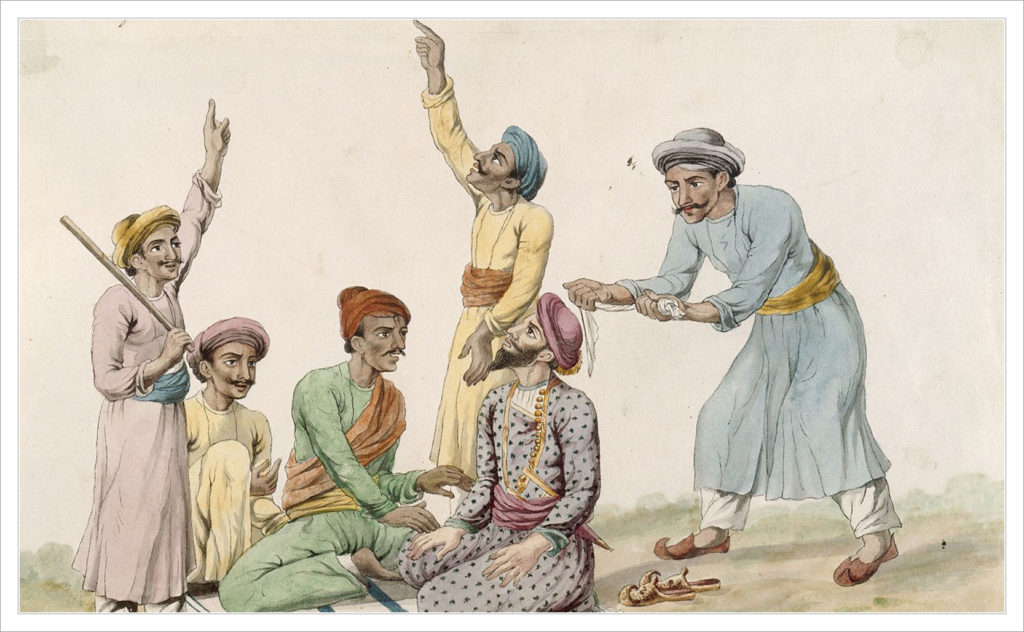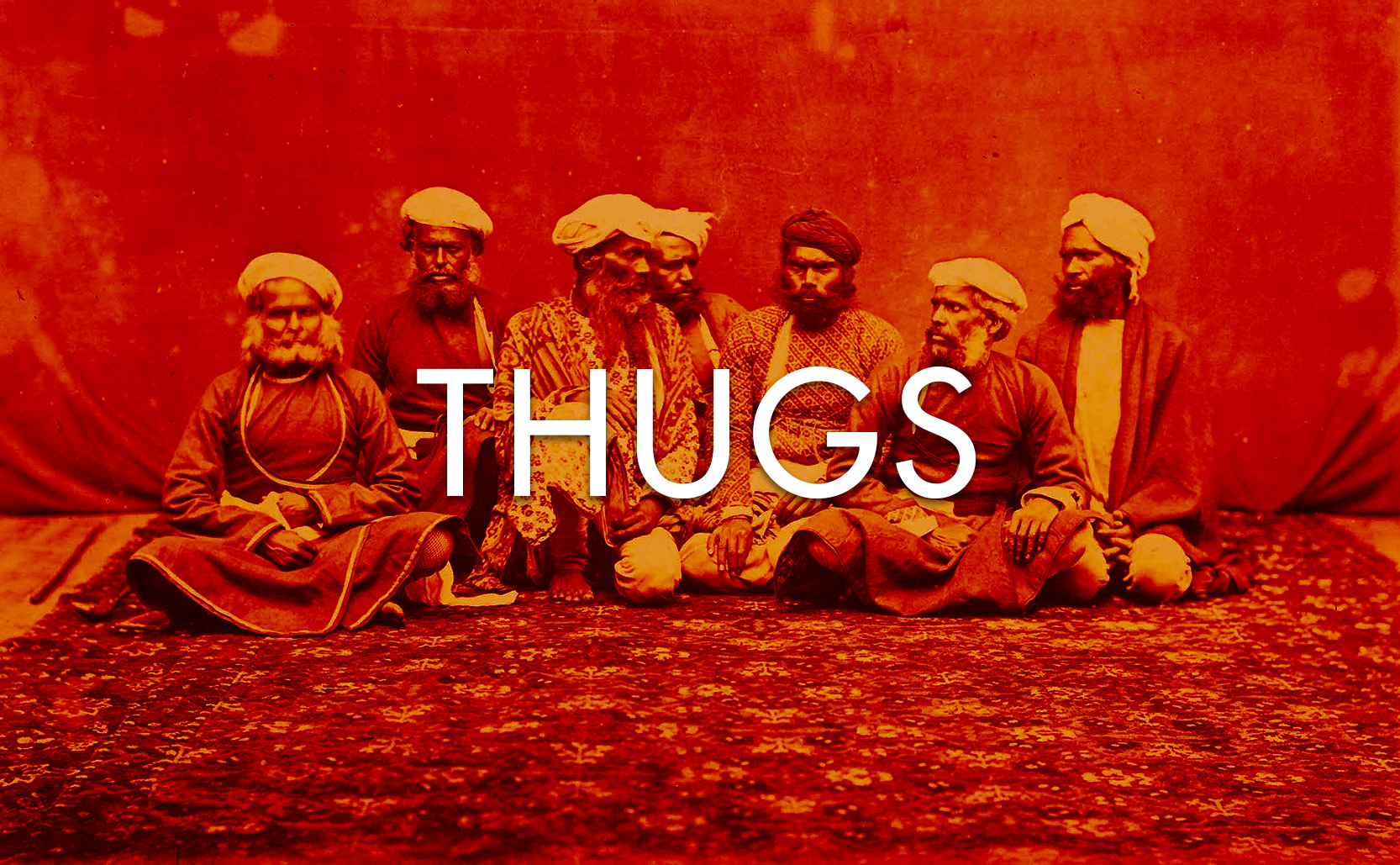Thugs
The term “thug” comes from India and centuries of murderous highway thieves.
The word “thug”, used in the common parlance to describe “a violent or brutish criminal or bully”, comes from the medieval highwaymen of India. Thugs were organized professional criminals. Posing as innocent travelers, thugs would gain the confidence of wealthy people traveling the same roads, sometimes traveling with them for a few days. Then, when the time was right, the thugs would strangle their victims, rob them, and dispose of their bodies. While thugs used a variety of methods for murder, their preferred method of strangulation may have been from a loophole in 16th century Mughal law which specified that a murderer would only be sentenced to death if he/she had shed blood.

Colonial Thug Life
Over the centuries thugs murdered & robbed tens of thousands of people. They gained international infamy with the British colonization of India. As the British encountered the thugs, stories of these scandalous criminals made it back home to England. The thug problem was even used in part to justify the colonization of India as the British would be “helping to save the natives from themselves”.
In the early 19th century the British began to break-up, prosecute, and eradicate the thugs. The Thuggee and Dacoity Department was formed in 1830 as a division of the East India Company to address the thug problem – hunting down thousands of thugs. By the late 19th century thugs had largely disappeared from daily life.

The “Cult of Kali”
In the west, thugs were often portrayed as members of a cult to the goddess Kali, murdering and robbing in her honor. It was even said that strangulation in particular was part of a divine mandate. In recent years however there has been increasing doubt as to the legitimacy of these religious claims. Modern thinking is that it’s unlikely these criminals were members of some wide-spread murderous death cult and more likely that the British were using these ideas to further their own agenda.
In portraying what were in actuality informal networks of criminals as a horrifying death cult the British could denigrate, delegitimize, and criminalize indigenous peoples. Over time “thug” became a term used to dismissively denigrate people of all kinds, but especially people of color. By the 1990s, in a reclaiming of the word, “thug” became a fixture of hip-hop especially through Tupac Shakur (who had “thug life” tattooed across his stomach). Today the word “thug” appears in either the lyrics or the artist name, of over 4,800 songs.
Added info: This association with Kali was the inspiration for the thuggee cult members in Indiana Jones and the Temple of Doom. Also, Kali is often portrayed with her tongue out, which served as inspiration for the Rolling Stones logo. Further, in Sympathy For The Devil, the lyric “And I laid traps for the troubadors / Who get killed before they reach Bombay” is believed to be a reference to thugs murdering Tibetan musicians on the road to Bombay.


